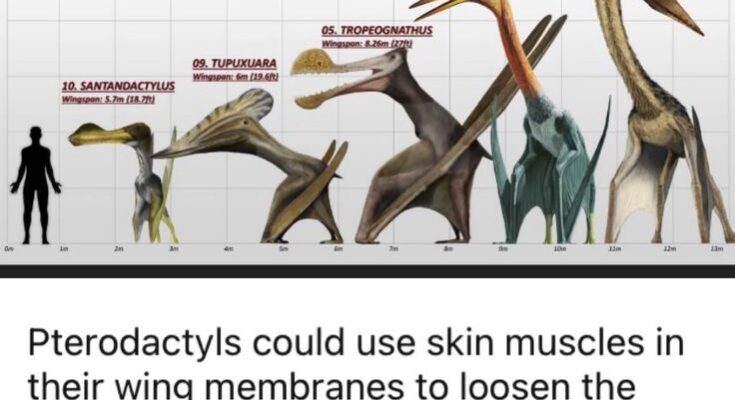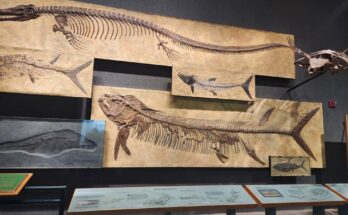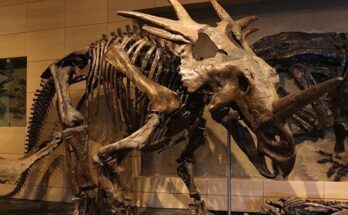Giants of the Sky: Decoding the Largest Pterosaurs and Their Remarkable Wing Mechanics
Introduction to Pterosaurs: Masters of Mesozoic Flight
Pterosaurs, the first vertebrates to achieve powered flight, dominated the skies from the Late Triassic to the end of the Cretaceous period, approximately 228 to 66 million years ago. These flying reptiles, often mistakenly called “flying dinosaurs,” evolved unique adaptations that allowed some species to reach colossal sizes, with wingspans rivaling small aircraft. This tutorial-style guide draws from an illustrative infographic depicting the largest flying prehistoric creatures—all pterosaurs—and a fascinating fact about their wing membranes. We’ll explore their size rankings, anatomical features, flight capabilities, and evolutionary significance, providing step-by-step methods for analyzing similar paleontological data. Whether you’re a budding paleontologist, educator, or enthusiast, this post will teach you how to evaluate fossil evidence, interpret biomechanical models, and appreciate the engineering marvels of ancient flight.
The infographic ranks select giant pterosaurs by wingspan, comparing them to a human silhouette for scale, and highlights a key adaptation: pterosaurs’ ability to use skin muscles in their wing membranes to loosen wings like parachutes for gliding or tighten them for flapping. While the chart lists Hatzegopteryx as the second-largest with an 11-12 meter (36-39 ft) wingspan, followed by Quetzalcoatlus at 10-11 meters (33-36 ft), and others like Tropeognathus (8.26 m/27 ft), Tupuxuara (6 m/19.7 ft), and Santanadactylus (5.7 m/18.7 ft), recent research refines these estimates. By following the steps below, you’ll learn to cross-reference sources, quantify sizes, and simulate wing functions using accessible tools.

Analyzing the Infographic: A Visual Guide to Pterosaur Giants
Infographics like this one serve as accessible entry points to paleontology, condensing complex data into comparative visuals. The featured chart, titled “Largest Flying Prehistoric Creatures,” focuses on azhdarchid and ornithocheirid pterosaurs, using a scale bar from 0 to 12 meters and a human figure (approximately 1.8 m tall) for reference. Note that the list appears truncated, starting at “02,” suggesting a possible top entry like Arambourgiania or Thanatosdrakon.
Step 1: Identifying and Ranking the Species
Begin by cataloging the depicted pterosaurs and verifying their wingspans against current estimates. Use a table for clarity:
| Rank in Infographic | Species | Infographic Wingspan | Current Estimate (2025) | Geological Period | Key Features |
|---|---|---|---|---|---|
| 02 | Hatzegopteryx | 11-12 m (36-39 ft) | 10-11 m (33-36 ft) | Late Cretaceous | Massive skull, robust build |
| 03 | Quetzalcoatlus | 10-11 m (33-36 ft) | 10-11 m (33-36 ft) | Late Cretaceous | Long neck, named after Aztec god |
| 05 | Tropeognathus | 8.26 m (27 ft) | ~8 m (26 ft) | Early Cretaceous | Crested skull, fish-eater |
| 09 | Tupuxuara | 6 m (19.7 ft) | 5-6 m (16-20 ft) | Early Cretaceous | Toothed beak, Brazilian finds |
| 10 | Santanadactylus | 5.7 m (18.7 ft) | ~5.7 m (19 ft) | Early Cretaceous | Slender wings, agile flyer |
Tutorial tip: Cross-check with databases like the Paleobiology Database or Wikipedia’s pterosaur list. Measure the human silhouette in the image (using image editing software like GIMP) and scale proportionally to confirm wingspans—e.g., Quetzalcoatlus appears roughly 6 times the human height in span.
Step 2: Expanding the List with Modern Research
The infographic omits some contenders. Incorporate recent discoveries for a fuller picture:
- Quetzalcoatlus northropi: Often tied for largest, with a 10-11 m wingspan; some older estimates reached 12 m, but refined models favor conservatism.
- Hatzegopteryx thambema: Comparable at 10-11 m, known for its wide skull suggesting predatory habits.
- Arambourgiania philadelphiae: ~10 m, one of the tallest on ground (up to 5 m at shoulder).
- Cryodrakon boreas: 10 m, from Canada, named “frozen dragon.”
- Thanatosdrakon amaru: 9 m, South American giant from 2022 finds.
Practical exercise: Use Python with libraries like matplotlib to plot wingspans on a bar graph, importing data from CSV files compiled from sources.

The Wing Membrane Adaptation: Flexibility for Flight
The infographic’s caption notes that “Pterodactyls could use skin muscles in their wing membranes to loosen the wings like parachutes, or tighten the wings for flapping.” This refers to pterosaurs broadly, as Pterodactylus was a small genus. Their wings consisted of a patagium—a membrane of skin, muscle, and fibers—stretched between the body, elongated fourth finger, and hind limbs.
Step 3: Understanding Wing Structure
Dissect the anatomy: The brachiopatagium (main wing) included actinofibrils (stiffening fibers) and dermal muscles for tension control. Loosening allowed parachute-like gliding for energy efficiency, while tightening enabled powered flapping for takeoff or maneuvers. Tutorial: Download 3D pterosaur models from MorphoSource and use Blender to animate membrane flexing—adjust mesh tension to simulate muscle action.
Step 4: Simulating Flight Biomechanics
Model how size affected flight. Giants like Quetzalcoatlus likely launched quadrupedally, vaulting 2.5 m into the air using all limbs. Use physics software like Python’s sympy to calculate lift: Force = 0.5 * density * velocity² * area * coefficient. For a 10 m span, area ≈ 20 m²; estimate mass at 200-250 kg due to hollow bones.
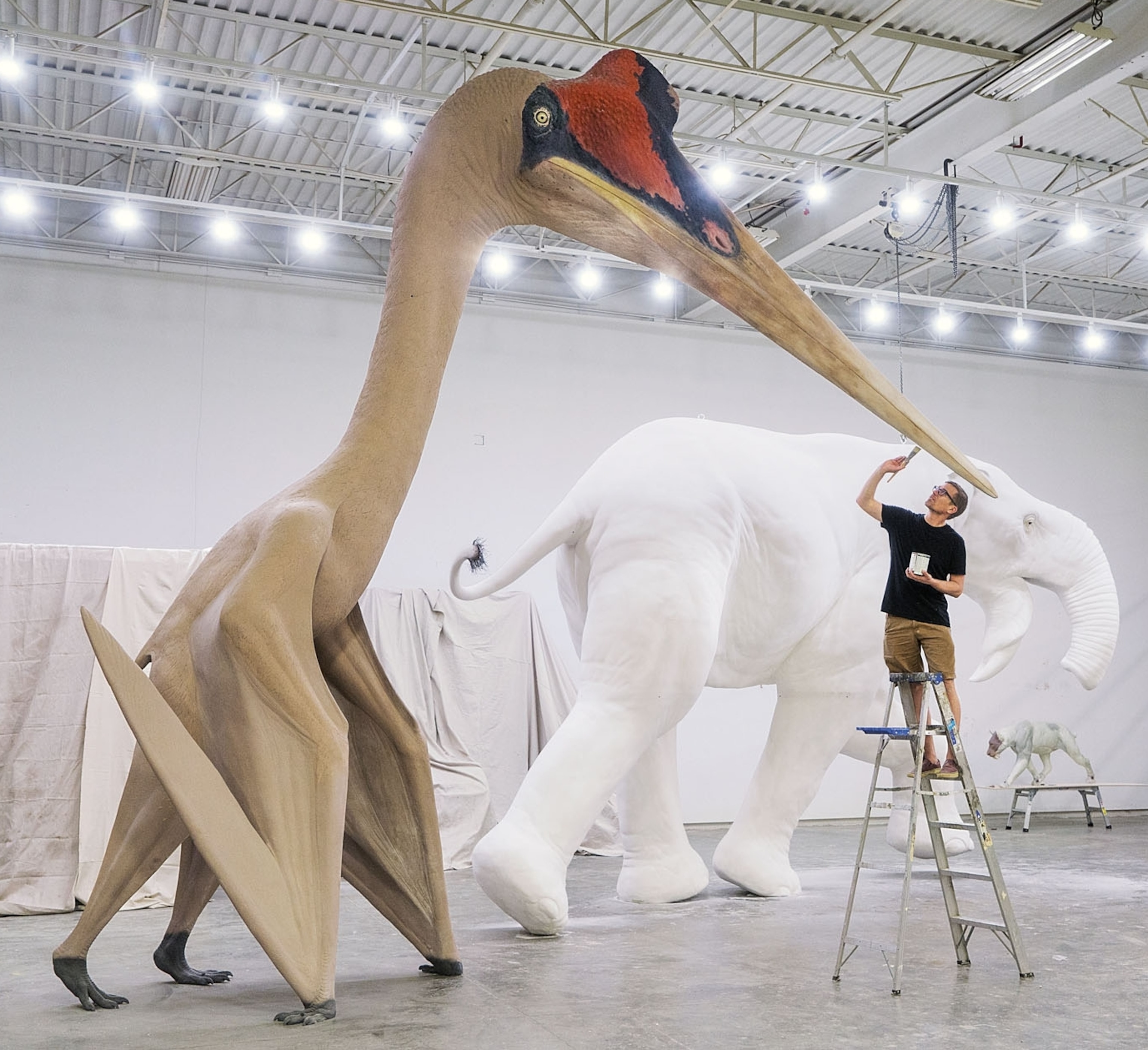
Scientific Background: Discoveries and Debates
Pterosaur research has evolved since the first descriptions in the 1780s. Giant azhdarchids like Quetzalcoatlus were named in 1975 from Texas fossils. Hatzegopteryx, from Romania, was described in 2002.
Step 5: Tracing Fossil Evidence
Excavate data: Fossils are often fragmentary, leading to wingspan debates—early Quetzalcoatlus estimates hit 15 m, now revised to 10-11 m via scaling. Tutorial: Analyze CT scans of fossils using ImageJ to measure bone lengths and extrapolate spans.
Step 6: Exploring Functional Hypotheses
Debate lifestyles: Were giants soarers or short-burst flyers? Models suggest transoceanic flights up to 10,000 miles. Simulate with code: Use numpy to model aerodynamics, factoring in glide ratios (up to 20:1).
Paleobiological Implications: Ecology and Extinction
These pterosaurs inhabited diverse environments, from coasts to islands, feeding on fish, small vertebrates, or carrion. Their extinction at the K-Pg boundary underscores vulnerability to cataclysms.
Step 7: Reconstructing Paleoecology
Map distributions using GIS tools with fossil data; infer herds from bone beds.
Conclusion: Lessons from Ancient Aviators
This infographic encapsulates the awe-inspiring scale and ingenuity of pterosaurs, from Hatzegopteryx’s predatory prowess to the versatile wing membranes enabling flight mastery. By mastering these analytical steps, you’ll unlock deeper insights into prehistoric life. Explore museums like the Natural History Museum in London or virtual resources for hands-on learning. Understanding these giants not only enriches paleontology but highlights evolutionary adaptations relevant to modern aeronautics.
